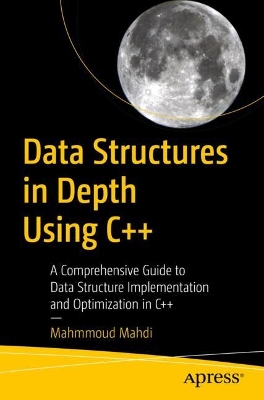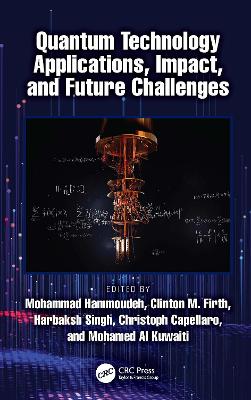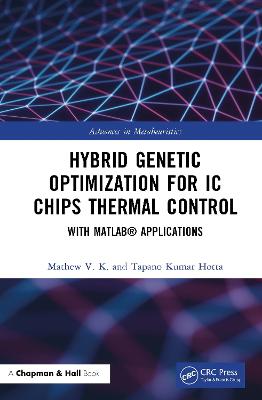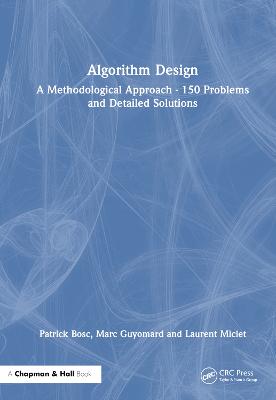Hybrid Genetic Optimization for IC Chips Thermal Control
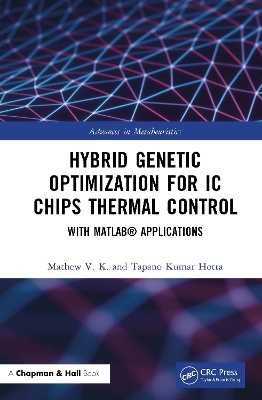 portes grátis
portes grátis
Hybrid Genetic Optimization for IC Chips Thermal Control
With MATLAB (R) Applications
Hotta, Tapano Kumar; V. K., Mathew
Taylor & Francis Ltd
10/2024
156
Mole
9781032036854
15 a 20 dias
NOMENCLATURE
ABBREVIATIONS
CHAPTER 1
INTRODUCTION
1.1 Need for electronic cooling
1.2 Printed circuit board (PCB) and Integrated circuit (IC) chips
1.3 Various cooling techniques
1.3.1 Air cooling
1.3.2 Phase change material based cooling
1.4 Optimization in heat transfer
CHAPTER 2
STATE OF THE ART STUDIES IN ELECTRONIC COOLING
2.1 Introduction
2.2 Studies pertaining to cooling of discrete IC chips
2.2.1 Studies relevant to Natural convection
2.2.2 Studies relevant to forced and mixed convection cooling of discrete IC chips
2.2.3 Studies pertaining to the phase change material (PCM) based cooling of discrete IC chips
2.3 Summary of the literature survey
2.4 Scope for development
2.5 Different parameters considered for the study
CHAPTER 3
EXPERIMENTAL FACILITY
3.1 Introduction
3.2 Selection of the IC chips and the SMPS board
3.3 Design of the IC chip and SMPS Board
3.3.1 Design of IC Chips
3.3.2 Design of the SMPS (Substrate) board
3.3.2.1 Substrate board design to carry out the laminar forced convection experiments
3.3.2.2 Substrate board design to carry out the experiments using the PCM filled mini-channels
3.4 Experimental setup and Instrumentation
3.4.1 Instruments used for the experimental analysis
3.4.1.1 DC power source
3.4.1.2 Hot wire anemometer
3.4.1.3 Temperature data-logger
3.4.1.4 Digital multimeter
3.4.1.5 Kapton tape
3.5 Experimental methodology
3.5.1 Procedure for conducting laminar forced convection steady-state experiments
3.5.2 Procedure for conducting transient experiments on the PCM filled mini-channels under the natural convection
3.6 Experimental calculations
3.6.1 Experimental calculations under laminar forced convection heat transfer mode
3.6.2 Experimental calculations for the PCM filled mini-channels under the natural convection heat transfer mode
3.7 Error analysis
CHAPTER 4
HYBRID OPTIMIZATION STRATEGY FOR THE ARRANGEMENT OF IC CHIPS UNDER THE MIXED CONVECTION
4.1 Introduction
4.2 Non-dimensional geometrics distance parameter (?)
4.3 Numerical framework
4.3.1 Governing equations
4.3.2 Boundary conditions
4.3.3 Grid independence study
4.4 Results and discussion
4.4.1 Maximum temperature excess variation of different configurations with ?
4.4.2 Temperature variation for the IC chips of the lower (? = 0.25103) and the upper extreme (? = 1.87025) configurations
4.4.3 Empirical correlation
4.5 Hybrid optimization strategy
4.5.1 Artificial neural network (ANN)
4.5.2 Genetic algorithm (GA)
4.5.3 Combination of ANN and GA
4.6 Conclusions
CHAPTER 5
HYBRID OPTIMIZATION STRATEGY TO STUDY THE SUBSTRATE BOARD ORIENTATION EFFECT FOR THE COOLING OF THE IC CHIPS UNDER FORCED CONVECTION
5.1 Introduction.
5.2 Different IC chips combinations considered for the experimentation
5.3 Results and discussion
5.3.1 Temperature variation of the IC chips for different substrate board orientations
5.3.2 Temperature variation of IC chips for different air velocities
5.3.3 Maximum temperature variation of the configurations for different substrate board orientations
5.3.4 Variation of maximum heat transfer coefficient of the configurations for different substrate board orientations
5.4 Empirical Correlation
5.4.1 Correlation for ? in terms of ?
5.4.2 Correlation for ?i in terms of the IC chip positions on the substrate board (Z), non-dimensional board orientation (?) and IC chip sizes (S)
5.4.3 Correlation for Nusselt number of the IC chips in terms of fluid Reynolds number and IC chip's size
5.5 Hybrid optimization strategy to identify the optimal board orientation and optimal configuration of the IC chips
5.5.1 Artificial Neural Network
5.5.2 Genetic algorithm
5.5.3 Combination of ANN and GA
5.6 Numerical investigation for the cooling of the seven asymmetric IC chips under the laminar forced convection
5.6.1 Computational model with governing equations
5.6.2 Boundary conditions
5.6.3 Mesh independence study
5.7 Numerical analysis for the IC chip's temperature under the different substrate board orientations
5.8 Conclusions
CHAPTER 6
NUMERICAL AND EXPERIMENTAL INVESTIGATIONS OF PARAFFIN WAX-BASED MINI-CHANNELS FOR THE COOLING OF IC CHIPS.
6.1 Introduction
6.2 Experiment set-up
6.3 Results and discussion
6.3.1 Temperature variation of IC chips without PCM based mini-channels (WPMC)
6.3.2 Temperature variation of IC chips for case 1 with and without the PCM based mini-channels
6.3.3 Temperature variation of IC chips for case 4 with and without the PCM based mini-channels
6.3.4 Temperature variation of IC chips for all cases with PCM based mini-channels (PMC)
6.3.5 Convective heat transfer coefficient variation for all cases with PCM based mini- channels (PMC)
6.3.6 Correlation
6.4 Numerical simulation of PCM based mini-channels under natural convection
6.5 Conclusions
CHAPTER 7
CONCLUSIONS AND SCOPE FOR FUTURE WORK
7.1 Introduction
7.2 Major conclusions of the present study
7.3 Scope for future work
REFERENCES
Appendix A
MATLAB programme for generating all the possible configurations for the arrangement of 7 non-identical rectangular IC chips on a substrate board.
Appendix B
Calculation of Mixed convection considered for numerical study
Appendix C
Sample calculation for non-dimensional temperature (?) and Fourier number (Fo)
Index
NOMENCLATURE
ABBREVIATIONS
CHAPTER 1
INTRODUCTION
1.1 Need for electronic cooling
1.2 Printed circuit board (PCB) and Integrated circuit (IC) chips
1.3 Various cooling techniques
1.3.1 Air cooling
1.3.2 Phase change material based cooling
1.4 Optimization in heat transfer
CHAPTER 2
STATE OF THE ART STUDIES IN ELECTRONIC COOLING
2.1 Introduction
2.2 Studies pertaining to cooling of discrete IC chips
2.2.1 Studies relevant to Natural convection
2.2.2 Studies relevant to forced and mixed convection cooling of discrete IC chips
2.2.3 Studies pertaining to the phase change material (PCM) based cooling of discrete IC chips
2.3 Summary of the literature survey
2.4 Scope for development
2.5 Different parameters considered for the study
CHAPTER 3
EXPERIMENTAL FACILITY
3.1 Introduction
3.2 Selection of the IC chips and the SMPS board
3.3 Design of the IC chip and SMPS Board
3.3.1 Design of IC Chips
3.3.2 Design of the SMPS (Substrate) board
3.3.2.1 Substrate board design to carry out the laminar forced convection experiments
3.3.2.2 Substrate board design to carry out the experiments using the PCM filled mini-channels
3.4 Experimental setup and Instrumentation
3.4.1 Instruments used for the experimental analysis
3.4.1.1 DC power source
3.4.1.2 Hot wire anemometer
3.4.1.3 Temperature data-logger
3.4.1.4 Digital multimeter
3.4.1.5 Kapton tape
3.5 Experimental methodology
3.5.1 Procedure for conducting laminar forced convection steady-state experiments
3.5.2 Procedure for conducting transient experiments on the PCM filled mini-channels under the natural convection
3.6 Experimental calculations
3.6.1 Experimental calculations under laminar forced convection heat transfer mode
3.6.2 Experimental calculations for the PCM filled mini-channels under the natural convection heat transfer mode
3.7 Error analysis
CHAPTER 4
HYBRID OPTIMIZATION STRATEGY FOR THE ARRANGEMENT OF IC CHIPS UNDER THE MIXED CONVECTION
4.1 Introduction
4.2 Non-dimensional geometrics distance parameter (?)
4.3 Numerical framework
4.3.1 Governing equations
4.3.2 Boundary conditions
4.3.3 Grid independence study
4.4 Results and discussion
4.4.1 Maximum temperature excess variation of different configurations with ?
4.4.2 Temperature variation for the IC chips of the lower (? = 0.25103) and the upper extreme (? = 1.87025) configurations
4.4.3 Empirical correlation
4.5 Hybrid optimization strategy
4.5.1 Artificial neural network (ANN)
4.5.2 Genetic algorithm (GA)
4.5.3 Combination of ANN and GA
4.6 Conclusions
CHAPTER 5
HYBRID OPTIMIZATION STRATEGY TO STUDY THE SUBSTRATE BOARD ORIENTATION EFFECT FOR THE COOLING OF THE IC CHIPS UNDER FORCED CONVECTION
5.1 Introduction.
5.2 Different IC chips combinations considered for the experimentation
5.3 Results and discussion
5.3.1 Temperature variation of the IC chips for different substrate board orientations
5.3.2 Temperature variation of IC chips for different air velocities
5.3.3 Maximum temperature variation of the configurations for different substrate board orientations
5.3.4 Variation of maximum heat transfer coefficient of the configurations for different substrate board orientations
5.4 Empirical Correlation
5.4.1 Correlation for ? in terms of ?
5.4.2 Correlation for ?i in terms of the IC chip positions on the substrate board (Z), non-dimensional board orientation (?) and IC chip sizes (S)
5.4.3 Correlation for Nusselt number of the IC chips in terms of fluid Reynolds number and IC chip's size
5.5 Hybrid optimization strategy to identify the optimal board orientation and optimal configuration of the IC chips
5.5.1 Artificial Neural Network
5.5.2 Genetic algorithm
5.5.3 Combination of ANN and GA
5.6 Numerical investigation for the cooling of the seven asymmetric IC chips under the laminar forced convection
5.6.1 Computational model with governing equations
5.6.2 Boundary conditions
5.6.3 Mesh independence study
5.7 Numerical analysis for the IC chip's temperature under the different substrate board orientations
5.8 Conclusions
CHAPTER 6
NUMERICAL AND EXPERIMENTAL INVESTIGATIONS OF PARAFFIN WAX-BASED MINI-CHANNELS FOR THE COOLING OF IC CHIPS.
6.1 Introduction
6.2 Experiment set-up
6.3 Results and discussion
6.3.1 Temperature variation of IC chips without PCM based mini-channels (WPMC)
6.3.2 Temperature variation of IC chips for case 1 with and without the PCM based mini-channels
6.3.3 Temperature variation of IC chips for case 4 with and without the PCM based mini-channels
6.3.4 Temperature variation of IC chips for all cases with PCM based mini-channels (PMC)
6.3.5 Convective heat transfer coefficient variation for all cases with PCM based mini- channels (PMC)
6.3.6 Correlation
6.4 Numerical simulation of PCM based mini-channels under natural convection
6.5 Conclusions
CHAPTER 7
CONCLUSIONS AND SCOPE FOR FUTURE WORK
7.1 Introduction
7.2 Major conclusions of the present study
7.3 Scope for future work
REFERENCES
Appendix A
MATLAB programme for generating all the possible configurations for the arrangement of 7 non-identical rectangular IC chips on a substrate board.
Appendix B
Calculation of Mixed convection considered for numerical study
Appendix C
Sample calculation for non-dimensional temperature (?) and Fourier number (Fo)
Index

